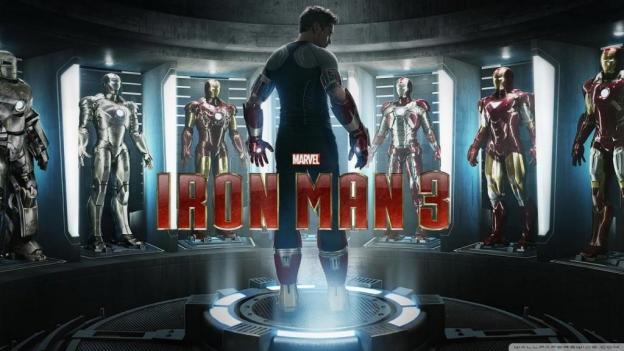
With nearly $1 billion in worldwide ticket sales so far and the second-highest opening weekend of all time, Iron Man 3 is officially a blockbuster – and it doesn’t show any signs of slowing down its armored assault on box-office records.
The third installment in Marvel Studios’ Iron Man franchise continues the series’ trend of offering audiences a blend of comedy, action, and eye-popping effects, and that entertaining status quo reigns on with new director Shane Black (Kiss Kiss Bang Bang) in charge. Like the first Iron Man, the new movie also serves as a herald of things to come, ushering in the second wave of films in the Marvel movie-verse in much the same way the first film did for the studio’s previous batch of big-screen superhero adventures.

That’s where the backward glances end, however, according to Marvel’s executive vice president of visual effects, Victoria Alonso.
“Every movie is a new adventure, so we don’t look at Iron Man and Iron Man 2 and say we need to do the next one bigger or better,” Alonso told Digital Trends. “We just have to do a good story with this movie. That’s what we put at the forefront of our minds.”
With a 78% approval rating on movie review aggregator RottenTomatoes.com, it would appear that audiences were more than happy with the story in Iron Man 3. The new story finds found playboy superhero Tony Stark (Robert Downey Jr.) targeted by the mysterious terrorist known as The Mandarin (Sir Ben Kingsley). When Stark issues a public challenge to The Mandarin, the result is one of the film’s most impressive visual-effects sequences: an all-out attack on the hero’s cliffside home.
The scene, which features multiple heavily armed helicopters unleashing their fury on Stark’s mansion overlooking the ocean, combines all of the crisp, polished FX the franchise is known for with its new director’s preference for slick, explosive action that doesn’t skimp on bullets.
“The house attack was one of the sequences I was most proud of,” Alonso said. “It took a lot of our time, because 95% of the sequence is digital, but it has to look photo-real and had to be done in such a way that you feel Tony Stark is in peril.”
In many cases, effects-heavy sequences like the house attack required a collaboration between multiple studios working in different areas of the world. Pressed for time due to a short post-production schedule, Alonso’s team found itself coordinating between 17 different visual-effects companies – sometimes with four companies working on the same sequence.
Ensuring that each sequence appeared to be the product of only one team tested the limits of even the most advanced technology in the studio’s arsenal, Alonso told us.

“When you have so many team members around the world, it’s difficult to keep that consistency of look that we need to have,” she explained. “We’re always trying to find the innovation in it all, but most importantly, we need to find the efficiency that technology can give us – because we’re always pressed for time. So the biggest challenge of this movie was managing the massive amounts of shots we had to push through in a limited time. Our movies usually have 28-33 weeks of post-production, but this movie had a maximum of 20 weeks.”

Still, given Iron Man’s reliance on high-tech armor to save the day, it’s no surprise that the technology making things possible behind the camera is occasionally overshadowed by the shiny gadgets and hardware that feature so prominently in Tony Stark’s life. The ultimate forward-thinker, Stark’s most prominent super-power is staying ahead of the curve – leaving Marvel Studios with the brain-straining task of bringing the fictional technology of the future to the screen today.
“We certainly hope we’re that smart – and maybe we invent something in a movie that somebody already has in the works,” Alonso said, laughing. “But even without that, we’re pretty smart at looking at what the technologies of the day are and where the world of science is going. We surround ourselves with a lot of smart people who know which way science is going and where the research is headed, so we can come up with a Hollywood take on where that will go and bring it into Tony Stark’s world.”

As for what lies in the future for Tony Stark and the rest of Marvel’s cinematic universe, Alonso promised more fan-friendly adventures with Thor, Captain America, and The Avengers, all of which have sequels in the works now – a situation made possible by audiences’ warm reception to the first wave of films.
“The weight is off our shoulders when the fans like these movies and we know we’ve done right by them,” Alonso said. “That so many fans are turning up for Iron Man 3, that’s a good sign.”
“We had never worked on a third movie before this, so this is all new for us.” She laughed, adding “We’re learning as we go.”



